Creta
Timeframe:
Six weeks
Responsibilities:
- Contributed to concept & ideation.
- Designed, prototyped and tested user experience & UI.
- Designed and developed the intro sequence.
- Produced 3D assets and animations.
- Created Visual Design and Demo Video.
Tools Used: Unity, ShapesXR, Blender, Adobe CC, Figma
XR Design Challege
The XR Design Challenge, created by Immersive Insiders, is a global competition inviting creators to push the boundaries of innovation in Virtual, Mixed, and Augmented Reality. Our diverse team of six members, coming from the USA, UK, and TLV, collaborated across time zones to combine our unique skills and perspectives. Together, we developed a creative concept that showcased the power of XR to connect tradition and innovation.
Team members: Sampada Bhatnagar, Alice McCutcheon, Tejas Shroff, Mary Chan, Anne-Elise Chung.
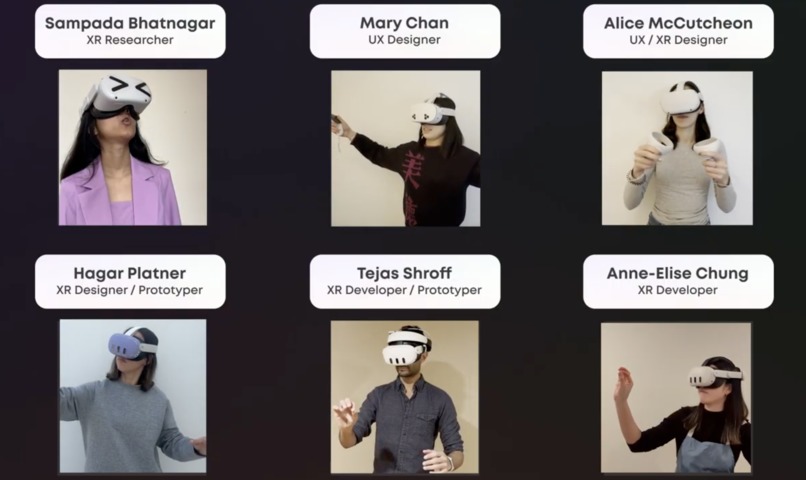
The process

Research
We interviewed hobbyist potters alongside more experienced artisans to compare their approaches and uncover key pain points in the pottery learning process. To emphasize the craft’s rich tradition, we also researched historical pottery methods and cultural stories, while reviewing existing XR solutions to identify gaps and opportunities.
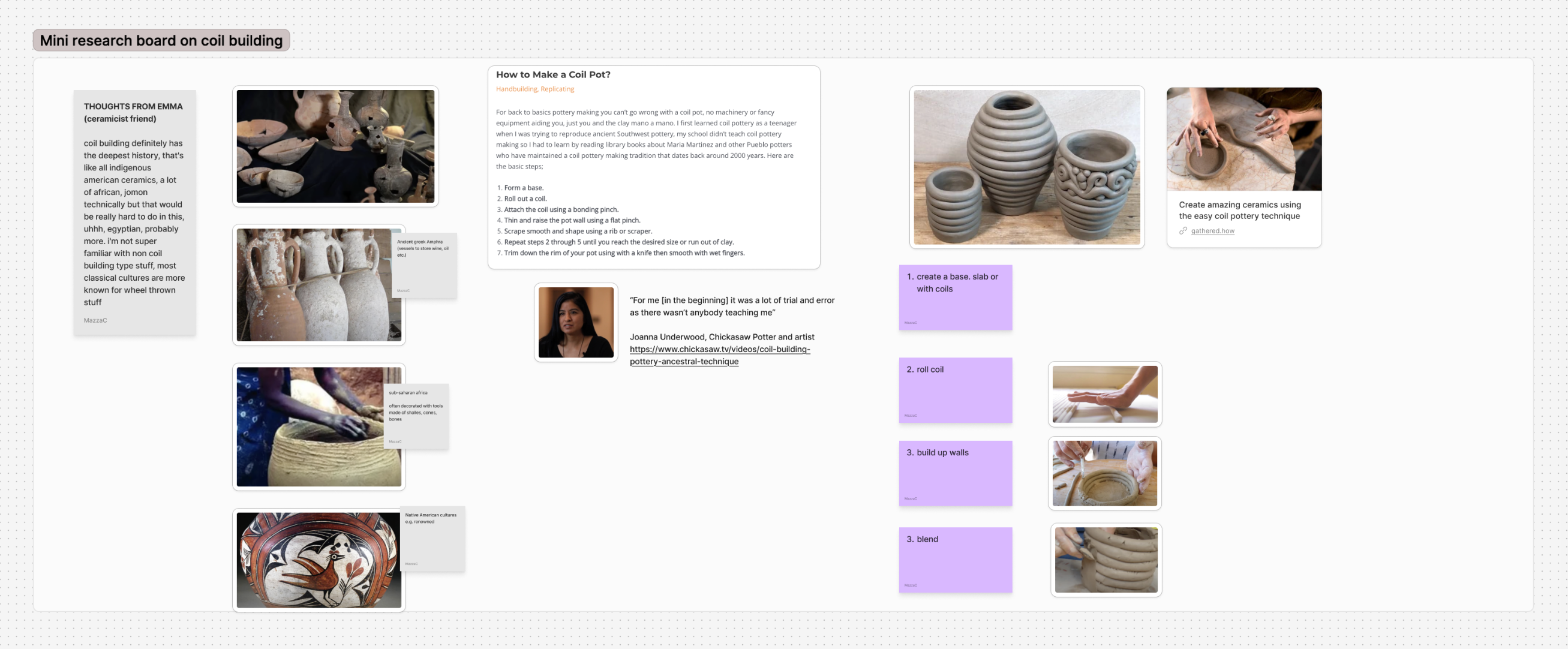
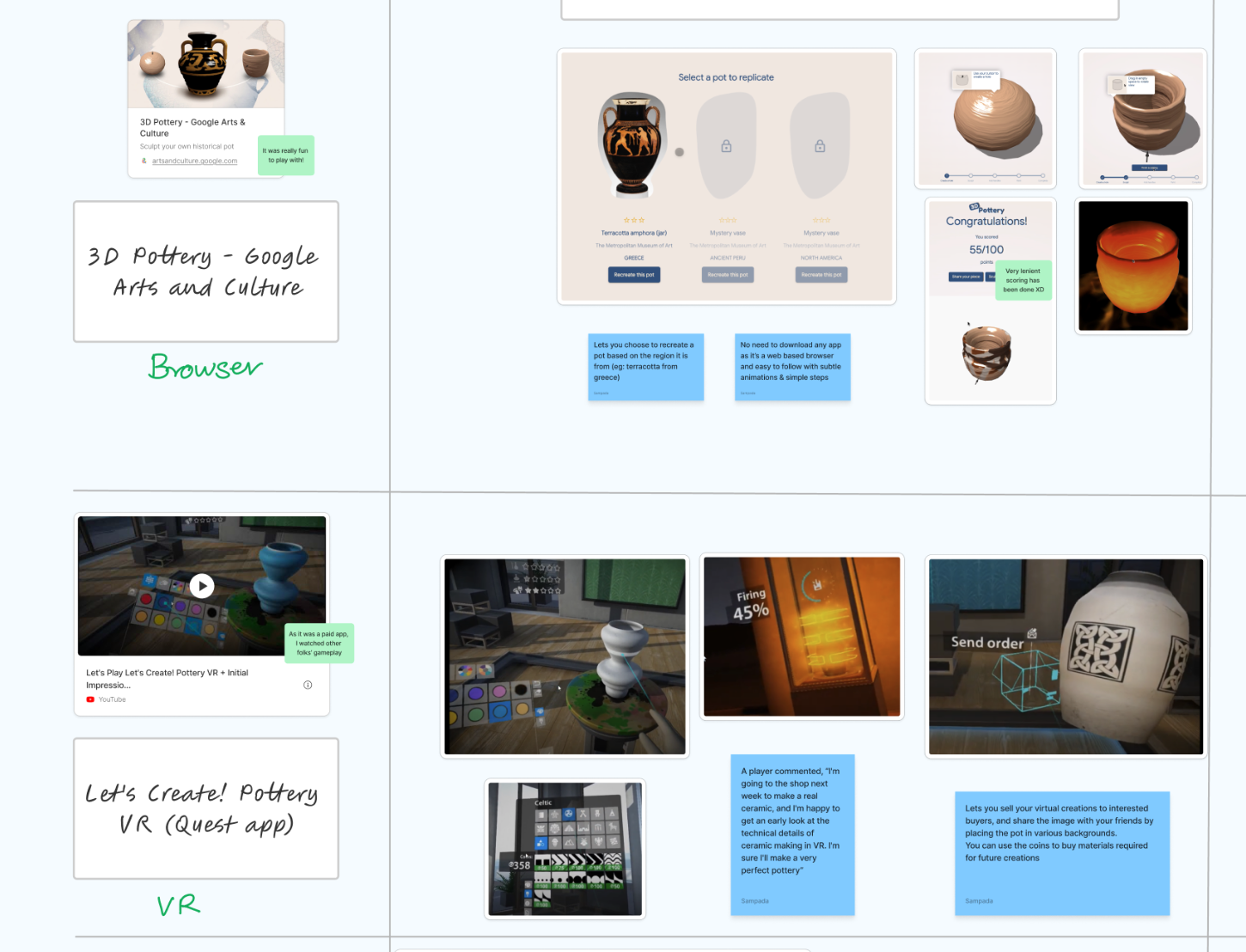
What did we want to find out?
- What prevents people from continuing to learn pottery?
- Which aspects of pottery learning are most challenging or missing?
- Can pottery be effectively learned at home without access to a studio?
- Which pain points are more significant—those faced by beginners or by experienced potters
Research methods
- User Interviews: Conducted with a range of pottery hobbyists, from beginners to more experienced practitioners.
- Comparative Analysis: Reviewed existing mixed reality interfaces and XR solutions to identify best practices and gaps.
- Prototyping: Developed and tested early XR concepts to explore potential learning approaches and user interactions.
Research insights
Many beginners and non-professionals struggle to find a personalized learning experience tailored to their skill level.
Most pottery classes focus solely on technique and overlook the cultural traditions behind the craft.
Additionally, people often find studio classes expensive, making it difficult to commit to or continue a course over time.
Concept
We set out to design an app for beginner pottery hobbyists, making it possible to learn pottery from home using air-dry clay—affordably and with rich, story-driven immersion. The result is a Mixed Reality learning experience that blends hands-on creation with cultural storytelling. Users craft historically inspired pieces, such as an Ancient Greek amphora, guided by AR overlays that provide step-by-step instructions, semi-transparent templates, and AI-powered feedback. Throughout the process, an AI artisan mentor shares historical context and answers questions in a culturally authentic voice. To encourage creativity and connection, the app also includes a sandbox mode for free-form exploration, a Community Shelf for sharing and appreciating work, and a Personal Shelf to carry a digital collection anywhere.
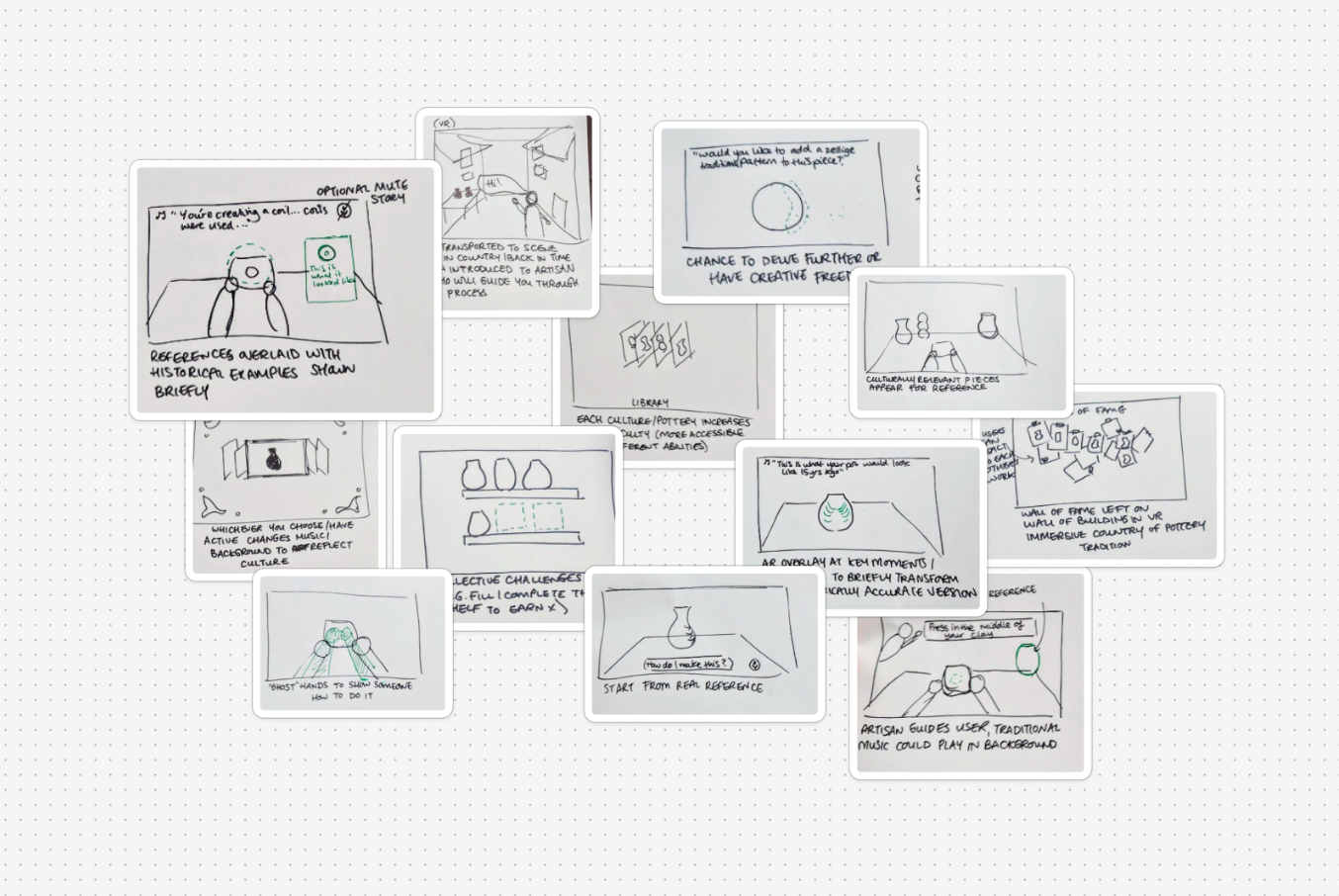
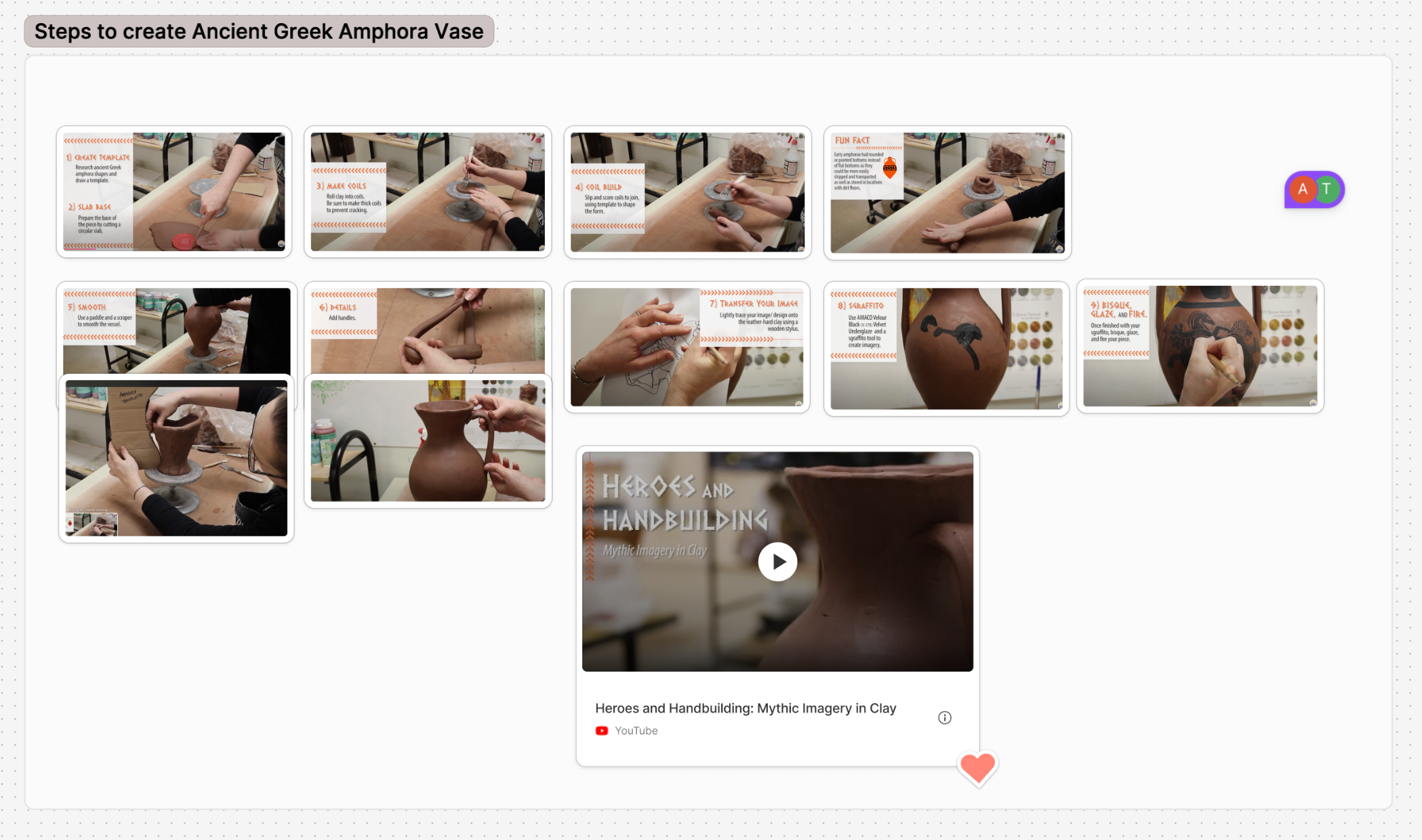
User Journey
Our primary focus in designing the user journey was to create a complete, immersive experience from start to finish. We aimed for users to feel fully engaged throughout the process and to leave with a meaningful souvenir—both physical and digital—that celebrates their creative journey.
The key features we prioritized include:
- The option to choose between structured, guided lessons or more freestyle exploration to suit different learning styles.
- The ability to select from a variety of traditional pottery stories and methods, deepening the cultural connection.
- A virtual reference model of the pottery element users are crafting to guide their work visually.
- Step-by-step lessons combining clear instructions with personalized AI artisan guidance.
- Accessibility features designed to offer a more personalized and inclusive experience.
- 3D guidance tools to assist with precision in shaping, cutting, and angling.
- A digital keepsake that captures the entire creative process and final piece, providing a lasting memory of the experience.

User interface
For the step-by-step section, the user interface was thoughtfully divided into two complementary types:
- 2D instruction cards clearly present each step with concise guidance and visuals, ensuring users always know what to do next.
- 3D guides provide intuitive spatial references - helping users accurately cut, shape, and angle their clay in real time.
Together, these elements create a seamless and immersive workflow that bridges traditional instruction with interactive Mixed Reality support.
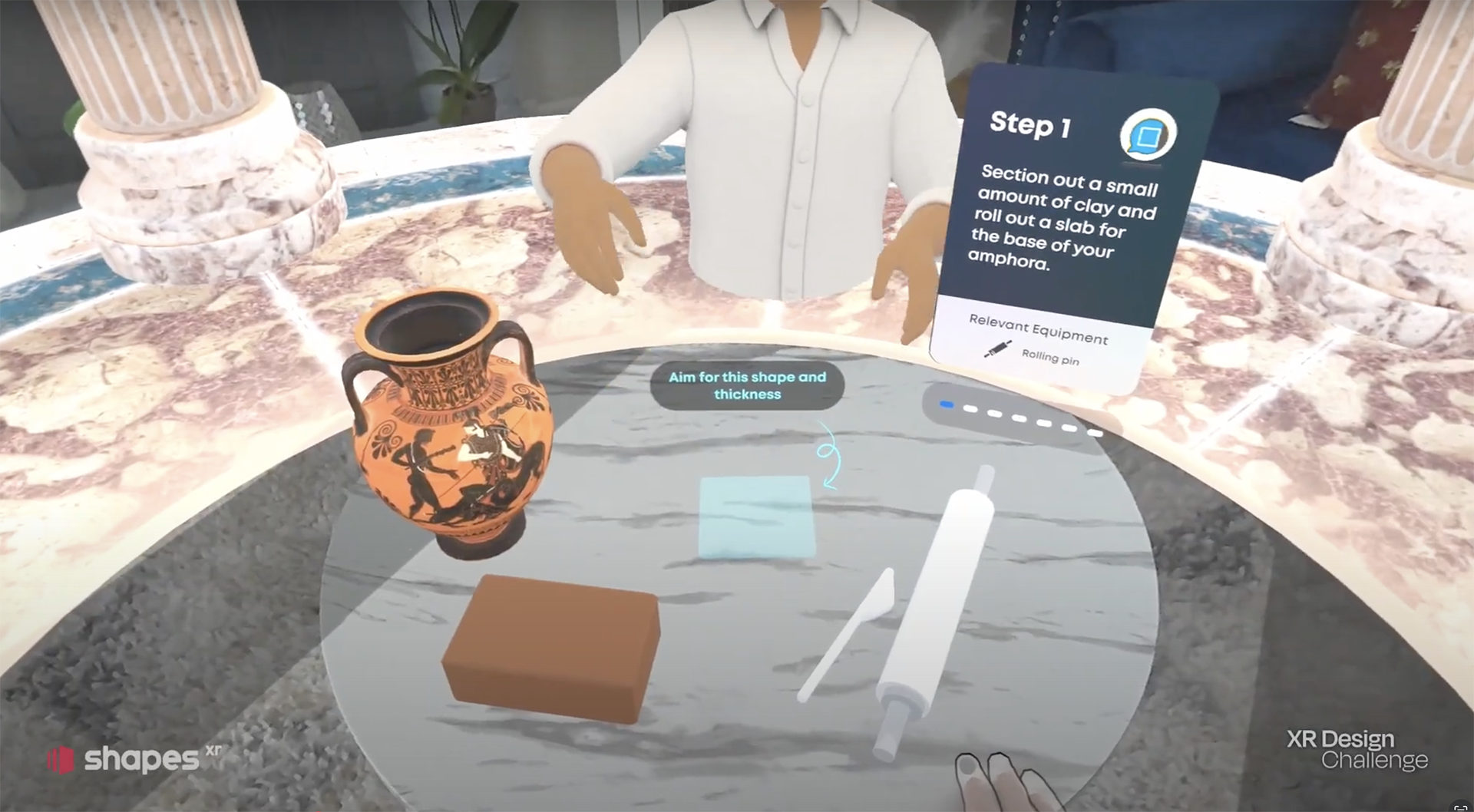

Prototype
This prototype demonstrates the core functionality of Creta. It highlights how users interact with step-by-step AR instructions and 3D guides to shape and cut their clay accurately.
Results
We successfully completed the project and received significant recognition within the XR community, including multiple
awards and showcases:
- Won two awards at XRDC finals: “Best Use of Logitech Stylus in ShapesXR” and “Hobbies & Skillbuilding.”
- Selected to showcase the project at AWE Long Beach 2025, the world’s largest XR conference, as part of the Nexus stage.
- Nominated for an Auggie Awards.
- Featured and showcased at the HarvardXR event.

What I learned
- Merging Technology with Tradition: This process showed me how technology can enhance traditional skills and techniques without taking away from their authenticity.
- Mixed Reality UX goes beyond the headsets: The focus shifts from the device to how technology can support and enhance the user’s hands-on creative process.
- Balancing Scope with Feasibility: While our team initially explored many exciting ideas - like an extensive craft library and gamification - we quickly recognized the need to focus on core elements such as MR-guided tutorials and cultural storytelling. This experience taught me how narrowing the scope early on enables delivering a polished prototype while keeping future growth possibilities open.